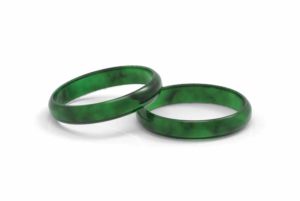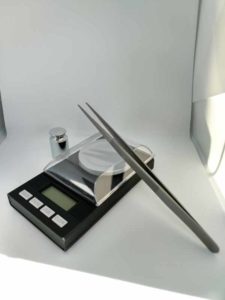By Samuel Michael Dilts, Laura Acosta Vidales, and Andrew Loo

Gemstones go through a series of processes—from the standard cutting and polishing to enhancement treatments—that transform the rough material into beautiful finished pieces to satisfy all types of customers. Jade is no exception to this. For centuries, producers have treated lower-quality jade to improve its marketability. This practice is still common today, and is accepted in the trade if full disclosure is respected, avoiding any kind of misrepresentation.
Enhancement treatments in jade seek to improve the stone’s colour, transparency, or stability. Even in the case of nephrite jade—which is seldom treated, as its structure rarely allows for dyes or resins—heat treatments may be used to improve the colour.
The main concern with all these treatments resides in the difficulty of their detection, as they rarely change the specimens’ refractive index (RI), specific gravity (SG), or hardness, which are the main tools most appraisers and jewellers rely on to identify a gemstone. The most reliable method to detect enhancements for both nephrite and jadeite jade is the use of fourier-transform infrared (FTIR) spectrometry and specialized lab equipment. For this reason, buyers in every stage of the value chain should require their suppliers to provide gemmological reports and certificates to validate the type and origin of traded pieces. (For more on jadeite treatments and identification, see “Judging jade: How to identify Type A, B, and C jadeite,” in the December 2018 issue of Jewellery Business.)
Another crucial factor for the jade trade is grading, which evaluates the quality of a piece regardless of its type or treatment status. As jade has been prominently marketed in Asia, Western markets have struggled to agree on a standardized process to grade the material. However, it is crucial to develop a clear system that allows transparent communication between buyers and sellers from anywhere in the world.
Gemstone grading aims to evaluate the different factors comprising a stone’s beauty. The effort to quantify a concept as subjective as beauty might seem impossible; however, with every gemstone, the main quality factors that contribute to a piece’s appeal are colour, transparency, cut, and clarity. In the case of jade, another factor is included: texture. A detailed description of how these factors are graded and their effect on a gem’s price would make a book unto itself. However, in this article, we would like to present a brief overview of the traits measured and treatments available in each category.

Photos courtesy New Sun Jade
Colour
In gemstone grading, colour is the most important factor determining a gem’s attractiveness and marketability. In gemmological terms, colour is usually divided into three components:
- hue (the ‘name’ of the colour, such as red, blue, or green);
- tone (its lightness or darkness); and
- saturation (its brightness or intensity).
Jade is mainly known for its green variety. However, both nephrite and jadeite are available in other hues. For example, jadeite can be lavender, yellow, black, white, red, orange, blue, grey, or even colourless, while nephrite can be found in white, grey, black, yellow, and brown. Both usually present unevenly distributed colouration, which make uniform vivid and medium-tone hues the most valuable ones, with pure green being the preferred colour.
The most common treatments impacting jade colour are bleaching and dyeing in jadeite and low-heat processing in nephrite. These treatments are not very reliable, and in some cases, they can bring out undesirable colours. The main concern with colour-treated pieces is the process compromises the stability and can be considered impermanent.
The impact on value of the jade piece here is twofold. The treatment can enhance value if the resulting colour is desirable in the market. However, a certified analysis of the piece can lower the value of the treated jade due to the aforementioned loss of stability and therefore lifespan.





